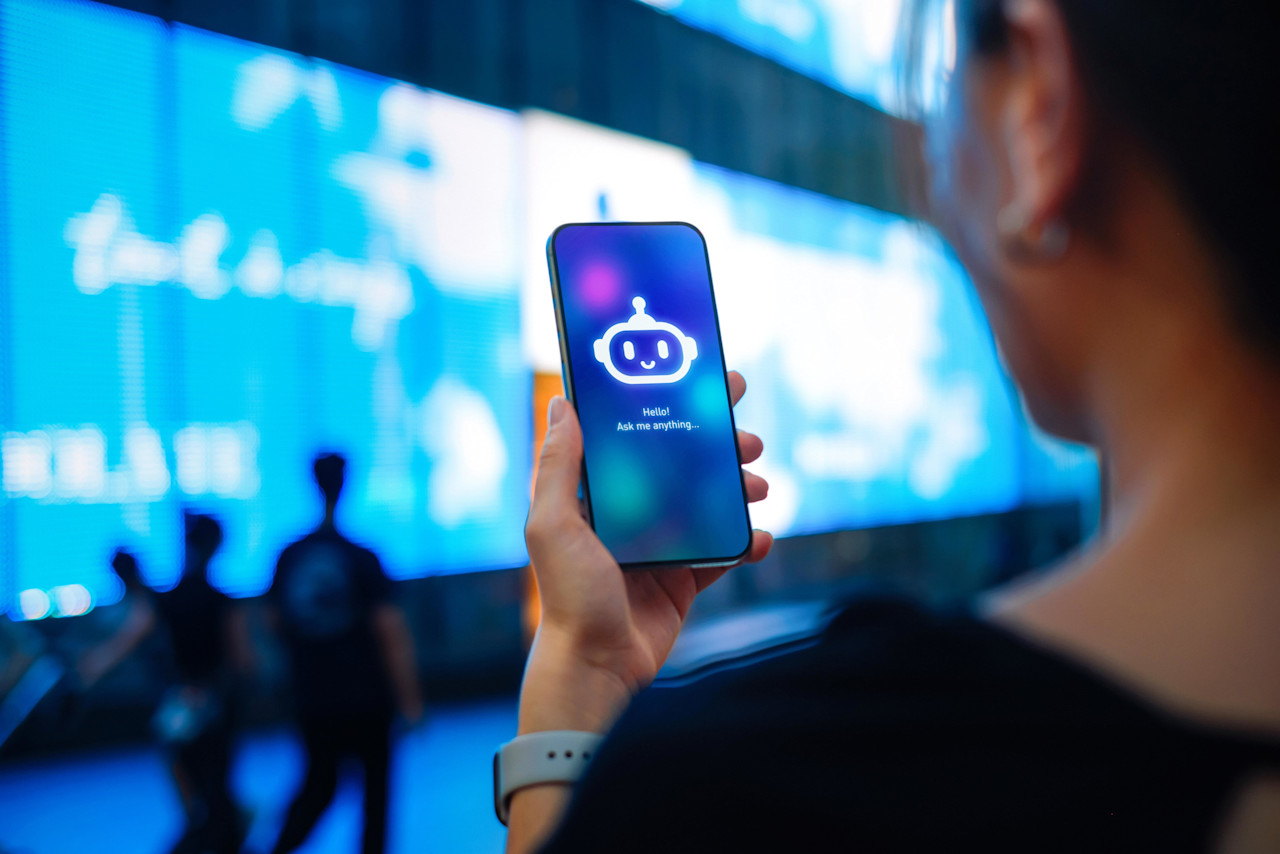

From food and fitness to AI and new drugs, positive trends are emerging in health
This year’s International Health Day motto, ‘Healthy beginnings, hopeful futures,’ aptly characterizes the current state of investing in the Healthy Living strategy. Despite a macro backdrop marked by heightened uncertainty, the Healthcare and Consumer Staples sectors are off to a ‘healthy’ start in 2025. More broadly, expanding fitness and nutrition trends, as well as the increasing use of AI to accelerate diagnosis and drug development, are creating a bright and hopeful future for the healthy living theme.
概要
- Prioritization of health and fitness creates opportunities for consumer brands
- From MedTech to drugs, AI has the potential to supercharge healthcare innovation
- The Healthy Living strategy offers attractive exposure to multi-year health trends
58% of physically active Gen Z and Millennials see fitness not just as a hobby, but as a priority and an integral part of their lifestyle. 1 For them, and many others, embracing an active lifestyle has become a defining personality trait and form of self-expression. That’s illustrated through the popularity of Instagram hashtags like “#pilateslovers” or “#runningman,” each with over five million related posts.
In addition, while fitness clubs have always been places where socializing mixes with activity, sports are now extending beyond the gym. Running clubs, community workouts, and yoga retreats are all gaining traction, each calling for specific performance gear and sportswear aesthetics. This not only creates fertile ground for brand marketing, but also opportunities for deeper consumer connections. Hyrox, a fast-growing sport that mixes running and strength, provides a good example of an activity which gained popularity through social media and led Puma to launch a dedicated athletic footwear.
Figure 1: For younger generations, fitness is more than a trend, it’s who they are

Fitness has become deeply ingrained in consumers’ daily lives.
Source: McKinsey, Sporting Goods Report Consumer Survey, December 2024.
That’s positive news for fitness brands, as consumer surveys show that over 80% of active individuals plan to maintain or increase their activity levels. Moreover, 30% of adults globally are still considered inactive. But what may seem like a negative indicator can also be seen as a significant opportunity. Converting that sedentary population represents a sizeable untapped market for sporting goods companies, equivalent to 1.8 billion people (or twice the number of adults in India). 2
Well-being is gaining muscle
The ‘active lifestyle’ ecosystem goes well beyond sporting goods. It also encompasses gyms, wearable devices, dietary and performance supplements, as well as better-for-you nutrition, all of which are experiencing solid levels of growth. Zooming in on nutrition, a growing number of consumers are selecting products for their health and performance benefits. Take functional hydration, for example. Once a category limited to sports drinks and unfashionable electrolyte tablets, it has become a trendy product thanks to investments in the space by large consumer packaged goods companies which cleverly identified an attractive niche.
Moreover, trends remain resilient even in the face of inflationary pressures. The health-conscious consumer continues to pay a premium for functional products, as demonstrated by the enduring double-digit growth in high-performance nutritional shakes. With such robust sales, multinational food & beverage companies are increasingly shifting their portfolio toward these high-growth segments, either organically or through M&A. For example, a high-single digit percentage of Coca-Cola’s sales in the US now flows from high-protein milk and shakes.3
Figure 2: Despite inflationary pressures, functional products are growing strongly

Source: Nielsen IQ, Euromonitor, Visible Alpha, BNP Paribas Exane estimates. January 2025.
Harnessing AI in health
Healthcare is constantly being revolutionized by new technologies, and AI is no different. For example, AI applied to medical imaging is helping cut the time needed for MRI and CT scans by up to half as higher-quality images are produced at faster rates. That reduces physician costs, increases patient satisfaction, and raises equipment utilization and operational efficiency.
However, the next leg of innovation lies in the ability to use AI to leverage patient medical data and large clinical datasets so clinicians can make better decisions. Clinical pathology, where tissue samples and other types of patient data are used to diagnose and treat disease, is a good example. According to the NHS, 70% of important medical decisions affecting patients’ lives involve laboratory tests and pathology services. 4 With computational pathology, AI models can provide more sensitive and timely determinations of medical conditions compared to human analysis.
In the case of cancer, findings from biomarker tests can then be leveraged to determine tumor type and create personalized treatment regimes for improved clinical outcomes in patients. AstraZeneca and Roche are notably co-developing such diagnostic tools. AI applications are expected to be a key driver of MedTech equipment upgrades. That means players with large installed bases of equipment in medical facilities and access to large amounts of data will have a competitive edge.
獲取最新市場觀點
訂閱我們的電子報,時刻把握投資資訊和專家分析。
Hopeful developments
Innovation is the core engine of growth for the biopharma industry. AI is likely to supercharge drug discovery by processing massive amounts of biological data. As an example, DeepMind’s AlphaFold can already predict a protein’s 3D structure, a process that once took months to years in the lab. This enables quicker validation of the target, typically a protein believed to play a role in a disease, on which scientists can more efficiently concentrate R&D efforts.
Figure 3: The AI stimulant

Source: BofA Global Research, Nat Med. 2025 Jan;31(1)
AI can also be used to optimize clinical trial design, thus reducing the risk of R&D failure later in the drug development process. Novo Nordisk has highlighted how using AI capabilities to harmonize data from 1,600 clinical trials has led to better disease insights, patient stratification, and drug target identification.5
Turning to current biopharmaceutical pipelines, in 2024 and 2025, the US FDA approved innovative solutions against some of the most challenging diseases confronting society.6 These include new modalities to treat lung cancer as well as disease-modifying drugs against Alzheimer’s. In the obesity space, a new generation of drugs is undergoing clinical trials. Moreover, the race for oral alternatives to injectable GLP-1s is also in full swing.
Healthy Living D EUR
- performance ytd
- -11.73%
- Performance 3y
- -1.47%
- 晨星評級
過往表現未必可作日後業績的準則。投資價值可能會波動。
Conclusion
Good health, like good medicine, begins with avoiding harm, which is why the healthy living strategy focuses on disease prevention via active lifestyles in addition to traditional healthcare segments. That means investing across the entire value chain of health, from companies focused on diagnostics, innovative drugs, and medical devices to those providing products that promote good nutrition and physical fitness – all known to reduce the risk of many chronic diseases.
With this comprehensive approach, the Healthy Living strategy should benefit from these multi-sector, multi-decade trends that are creating healthy beginnings and a brighter future – for both patients and portfolios.
Important note: The companies cited in this article are for illustrative purposes only to demonstrate the investment strategy on the date stated. The companies are not necessarily held by the strategy. Moreover, no inference can be made on the future development of the company.
Footnotes
1 McKinsey, March 2025. Sporting Goods 2025 – The new balancing act: Turning uncertainty into opportunity
2 Ibid.
3 Please also see Theme 3: “Healthcare – diverse trends and innovation signal positive prognosis”, found in Robeco’s 2025 Thematic Outlook, January 2025.
4 First Report of the UK House of Commons Select Committee on Health, May 2022, para 141.
5 Novo Nordisk, Capital Markets Day, March 2024.
6 US Food & Drug Administration’ Novel Drug Approvals for 2025.
Important information
The contents of this document have not been reviewed by the Securities and Futures Commission ("SFC") in Hong Kong. If you are in any doubt about any of the contents of this document, you should obtain independent professional advice. This document has been distributed by Robeco Hong Kong Limited (‘Robeco’). Robeco is regulated by the SFC in Hong Kong. This document has been prepared on a confidential basis solely for the recipient and is for information purposes only. Any reproduction or distribution of this documentation, in whole or in part, or the disclosure of its contents, without the prior written consent of Robeco, is prohibited. By accepting this documentation, the recipient agrees to the foregoing This document is intended to provide the reader with information on Robeco’s specific capabilities, but does not constitute a recommendation to buy or sell certain securities or investment products. Investment decisions should only be based on the relevant prospectus and on thorough financial, fiscal and legal advice. Please refer to the relevant offering documents for details including the risk factors before making any investment decisions. The contents of this document are based upon sources of information believed to be reliable. This document is not intended for distribution to or use by any person or entity in any jurisdiction or country where such distribution or use would be contrary to local law or regulation. Investment Involves risks. Historical returns are provided for illustrative purposes only and do not necessarily reflect Robeco’s expectations for the future. The value of your investments may fluctuate. Past performance is no indication of current or future performance.






















